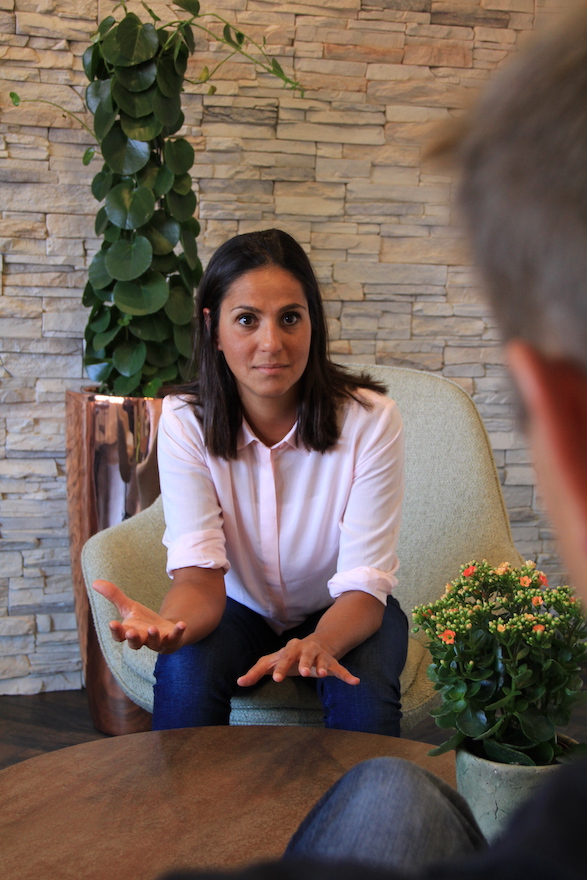Fashion Industry – Between Glamor And Reality

The fashion industry is a fascinating world that is closely followed by an interested public. Designers, art directors, producers, photographers, models and many others who are not in the spotlight work for it. It has long been known that the fashion industry can also make its players ill.
Emotional stress in the fashion industry. Our expert Baha Meier-Arian, founder and managing director of the private practice for business and character coaching for entrepreneurs and managers, knows the mechanisms. She knows that as a player in this business, you have to develop resistance to stress. But the fashion industry itself is also beginning to take more notice of its darker side.
Do I want to work here?
Anyone working in the fashion industry should ask themselves this question honestly. As in many industries, the art of success lies in knowing exactly what your own motivation is. It should at some point be clearly intrinsic and fed by joy in expression, in one’s own actions, in the resulting life and from loving devotion to beauty. The fashion industry has its rules, which are difficult to influence at first.
Suffering and despair arise when your own professional role is supposed to fulfill unrealistic expectations (perhaps also those of other people?): Feeling beautiful even though you reject yourself. To feel loved even though you fight against yourself. To finally be tall, even though you feel small. These challenges can break a person, which is particularly evident in this high-publicity business. However, growth and maturation are also possible in this area of tension if essential things are not lost sight of.
Keeping in touch with reality
When we think of people who remain efficient and healthy in fashion, they are usually said to have what is known as a down-to-earth attitude. What exactly does that mean? The world of the beautiful and successful is ultimately just a fleeting dream. It does not exist in such a way that you can really live in it and from it. Being down-to-earth means knowing this. Your own life is then based on real and personal values: for some, it is the family, children and friends with whom you share your life.
Anything that grounds you and reminds you of your own connection to life, such as nature, living with animals, gardening and crafts, endurance sports can be just as useful. Those who are rooted in a real world experience it as a protective and nourishing place. What’s more, the meaning of life can emerge from the connection between different worlds: Sometimes the very success of a creative person is the driving force to use the resulting profits for the benefit of other people, living beings and the planet earth.
Turning competition into a joint game
The idea of scarcity is very deeply rooted in many people. It ultimately fuels senseless and merciless competitive thinking. Creative people in particular could recognize this: There are enough colors, materials, spaces and visions for everyone in the fashion industry. Sustainable projects are created through cooperation. Synergies are the driving force behind impressive creations, not egotism. Nobody achieves anything on their own. And even if there seem to be only a few stars, they would all be nothing without the many creative people who make the potential success visible in the background.
Good, clear and respectful communication can transform creative spaces into places of joy and togetherness. No one is an island unto themselves. Solidarity conveys a secure feeling of being part of something big and whole. Funnily enough, we often only feel the longing for this in times of need and distress. The pandemic has made this quite clear, especially in the industries in which creative people work.
Understand and train resilience
Creative industries require their players to be on point, efficient and in the flow. This is similar in sport. More so than in the fashion industry, athletes have long since learned and used certain techniques and strategies to cope with the given circumstances:
Breathing and visualization techniques, for example, help actors to successfully call upon their skills at the right time (and sometimes even under unfavourable conditions). At the same time, they learn tools for releasing themselves from tension when necessary, coming back to themselves and staying centered.
The latter helps you to always be your own benchmark: When can I demand further performance from myself? When do I need a break? What can this look like and what should be possible during it? Suitable technical equipment such as headphones and relaxation tools on playback devices also make it possible to find peace and focus in a chaotic environment.
The fashion industry in positive change?
The first changes towards more humanity are barely perceptible at first. Increasingly, however, even the fashion industry cannot ignore the consequences of its own business toughness. But as an expert and psychological consultant, Baha Meier-Arian also knows that healing changes in stressful industries are more likely to result from the vigilant presence and clear communication of those involved than from external demands. Nevertheless, new laws and regulations are an opportunity to make initial improvements possible and liveable for the benefit of those involved.
fashion industrie, stress management

C&C Autorin aus Ulm
Baha Meier-Arian ist Gründerin und Geschäftsführerin der Privatpraxis für Business- & Charakter-Coaching für Führungskräfte. Ihre Schwerpunkte liegen im Charakter- und Business-Coaching, empathisch direkte Kommunikation, neue Perspektiven schaffen für Firmen, Führungskräfte und Unternehmer. Sie verhilft durch Krisensituationen und ist Mutmacherin.




